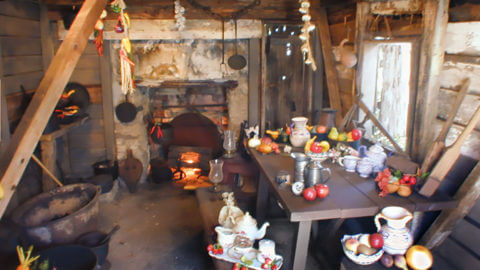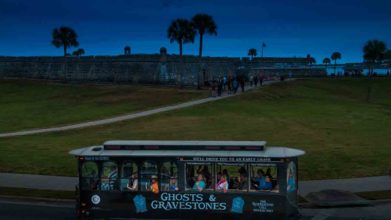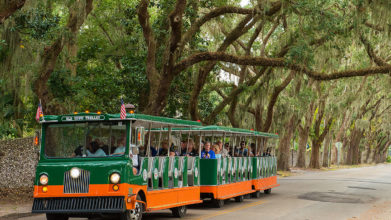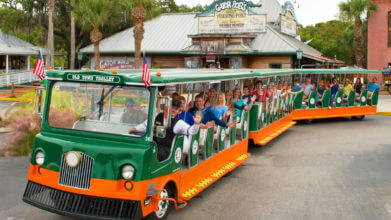The Minorcans

Before the tiny cedar and cypress house, tucked in among the eclectic shops and restaurants of Saint George Street, was called the Oldest Wooden Schoolhouse it was the Genopoly House. An interesting story surrounds its owner, Minorcan immigrant, Juan Genopoly, a carpenter from Mani, Greece.
Who were the Minorcans and how did they get to St. Augustine? Juan Genopoly was one of over 1400 Minorcan, Greek, Italian, and Corsican people from around the Mediterranean who, in 1768, signed on as indentured laborers to work on the indigo plantation of Dr. Andrew Turnbull, a Scottish physician. The land on which he wanted to cultivate was located in the wilderness of East Florida, south of St. Augustine. It was called the New Symrna colony.
The group, collectively known as Minorcans endured dreadful conditions in the hands of the overseers. They were starved, mistreated and kept beyond the time of their indenture. In 1777, after 9 years of mistreatment, during which half the Minorcans died, the survivors got away, and walked 70 miles to St. Augustine to seek refuge. They were given asylum by British governor, Patrick Tonyn and granted an area in the northwest section of the old walled city which became known as the Minorcan Quarter.
In 1780, Juan Genopoly purchased what is now called the Oldest Wooden Schoolhouse, located in the granted area, which became a Minorcan enclave. The small, one-story house was the Genopoly family home. In 1811, he added a second floor as personal living space for his family, and the Genopoly family taught Minorcan children in a schoolroom on the first floor.
Juan and other Minorcans remained in St. Augustine through the 2nd Spanish occupation, the acquisition of Florida by the United States and statehood. Today, many St. Augustine residents proudly trace their ancestry to the Minorcans, long an integral part of the distinct character of St. Augustine.




